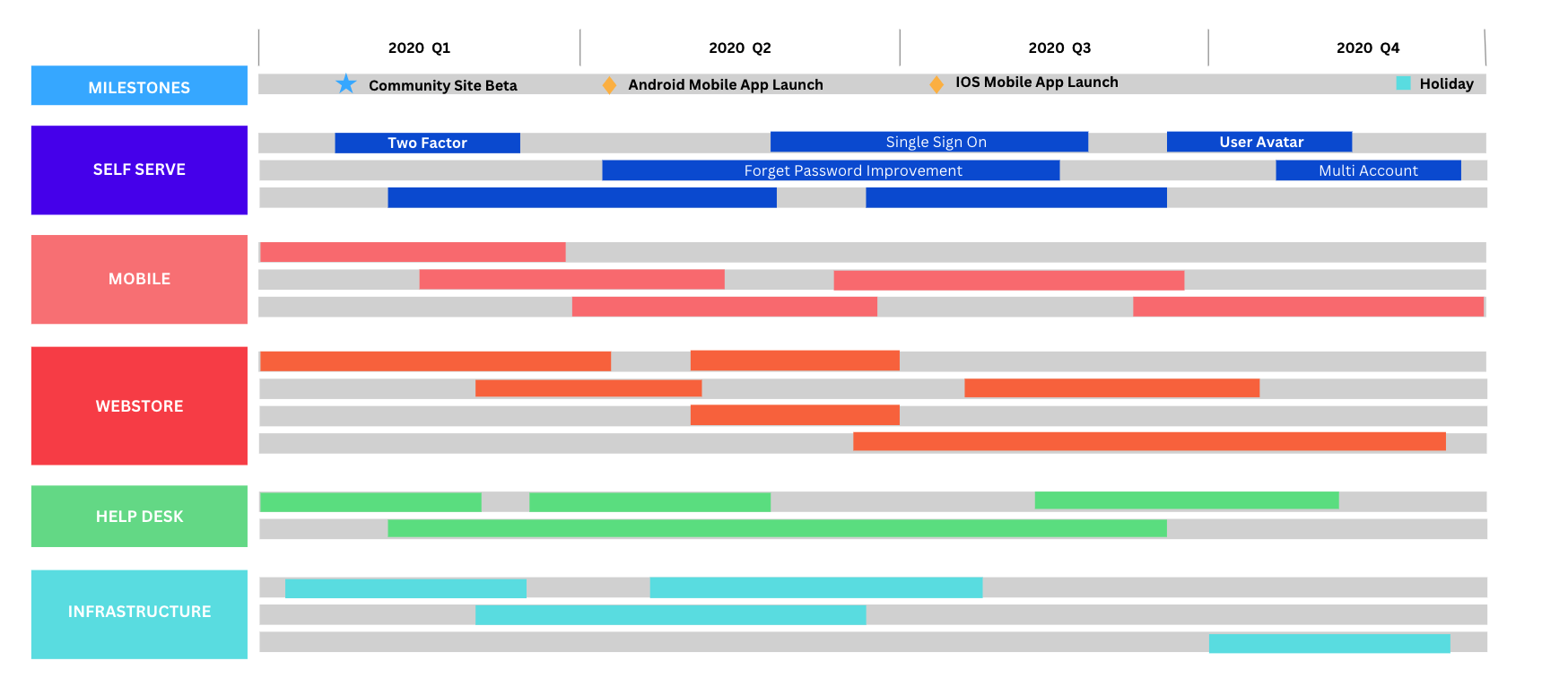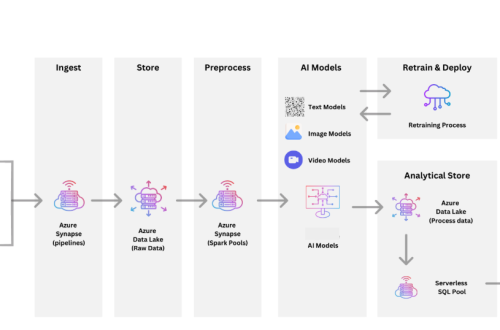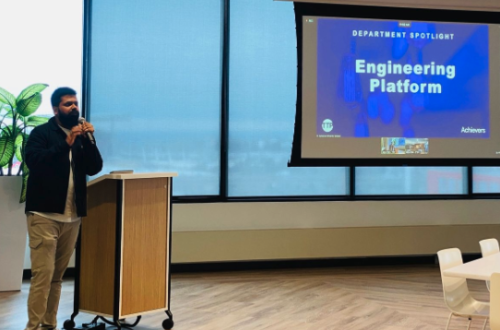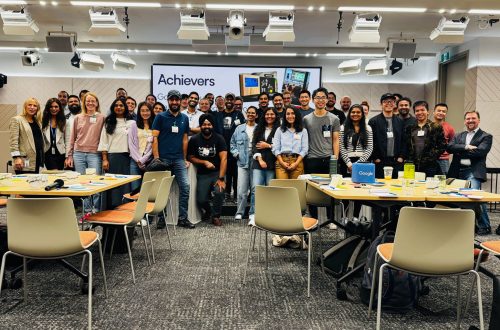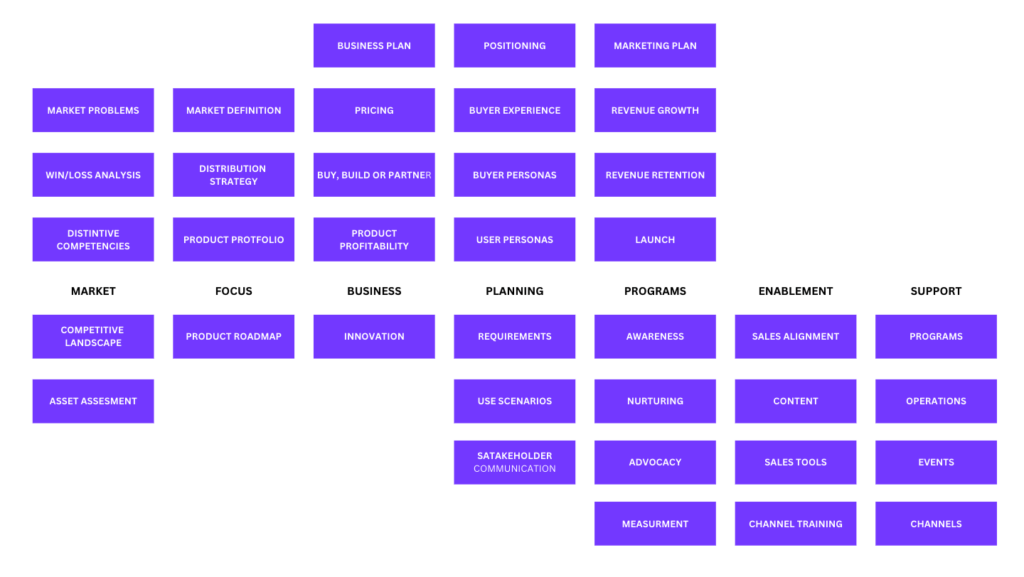
A product manager frequently bears the moniker of a “mini-CEO,” given their direct involvement in every phase of a product’s life cycle.
A product manager is responsible for ensuring that the company’s goals are met and that there is a market for its products. They also ensure that their team has all the resources they need to develop and launch products quickly and efficiently.
Product managers work with cross-functional teams to oversee all aspects of new product development, from conception through delivery and post-launch support.
They take on many roles, such as business analyst, project manager, marketer, salesperson and engineer, at different times during the process.
Product managers often have backgrounds in marketing or engineering, but it’s not necessary to have one of these backgrounds to be successful in this role.
Here is a visual guide of what the journey of product management looks like.
Creating the Product Vision
Product Development Vision is a process that can help you identify the best product idea and how to bring it to life.
The process starts with defining the problem that you want to solve. This means understanding what your customer needs and wants and what they are willing to pay for. You also need to understand what your competitors are doing in this space, which will help you know where there is an opportunity for your product.
Once you have identified the problem, you must consider how users will interact with your product. The user interaction flow should be simple and intuitive so that people can quickly figure out how it works without reading a manual or watching an instructional video. Next, decide on the product’s features that will make it stand out from other products in its category. These features might include design, functionality or usability improvements over existing products in the space or competitive advantages like lower prices or higher quality. Finally, make sure that there is a clear path from development through testing and user feedback.
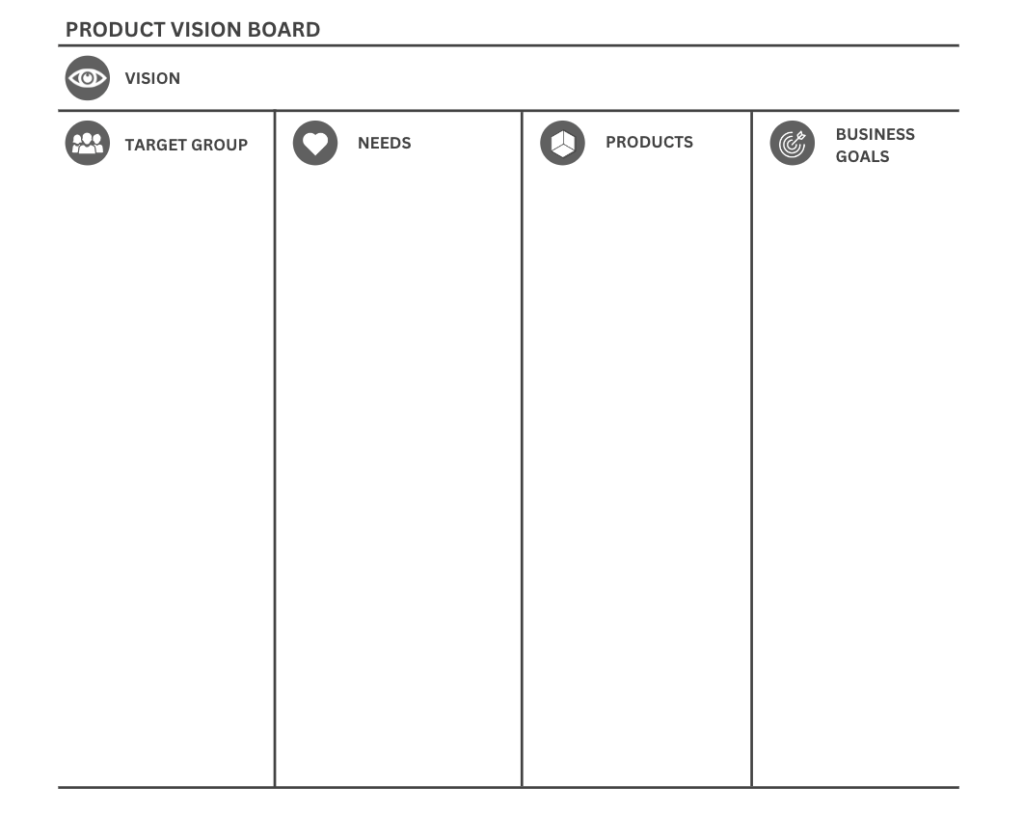
Managing the Product Roadmap
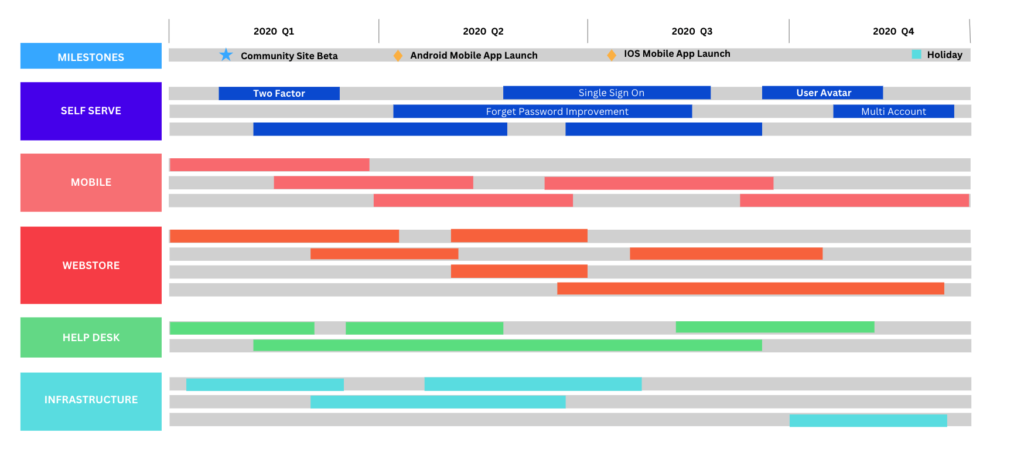
Agile & Scrum
Product development is a complicated process that requires a lot of time and resources. The most popular way to develop products is with the Agile methodology. Agile was created in 2001 and has been used as one of the most popular and impactful frameworks. Scrum is one of the main methods within Agile. The best thing about scrum is that it is very flexible; you always have user feedback on what you build and can improve when necessary. The second-best benefit for me is team collaboration.
In scrum, an entire project is divided into different phases, known as sprints. The sprints are standalone containers where the team decides what to build, collaboratively works on it, and delivers it to the stakeholders. Usually, sprints are for 2 to 4 weeks. The scrum team comprises the product owner, developers, and scrum master. Stakeholders are critical to the process because they provide feedback on the results.
User stories are turned into items of the product backlog. The product backlog is the ultimate list of things to deliver to build the product. Product backlogs can be divided into release backlogs and eventually split into sprint backlogs.
Planning Product Releases and Sprints
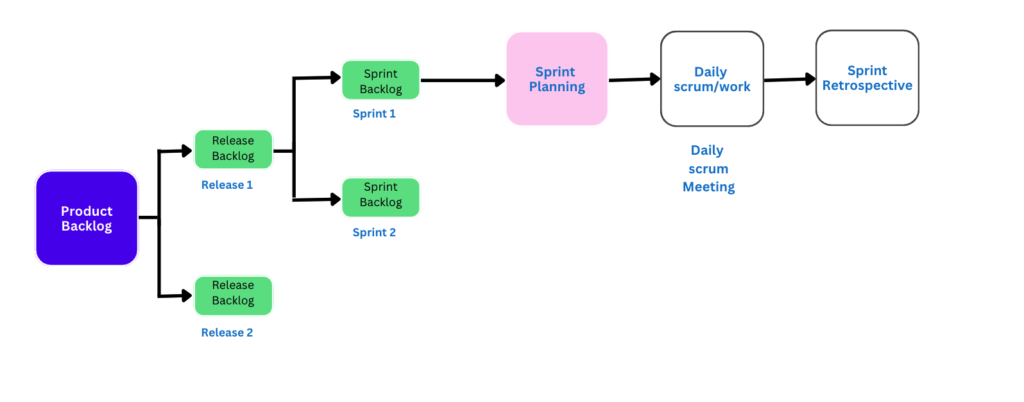
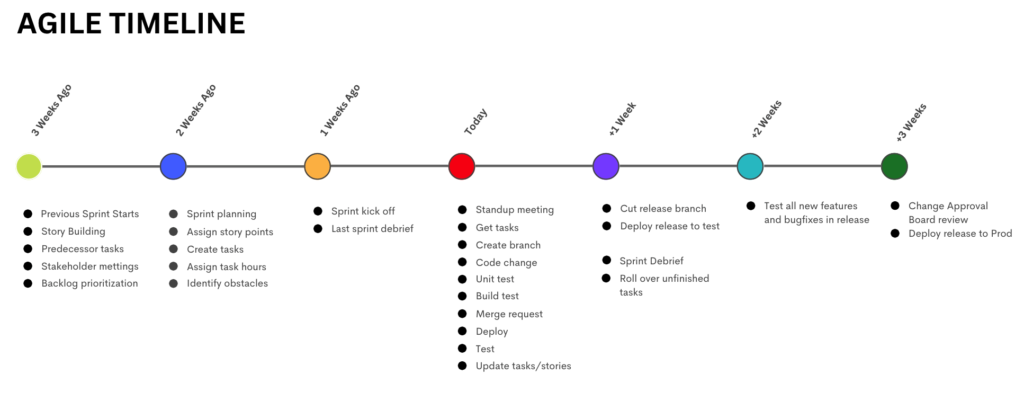
Product Development Sprints
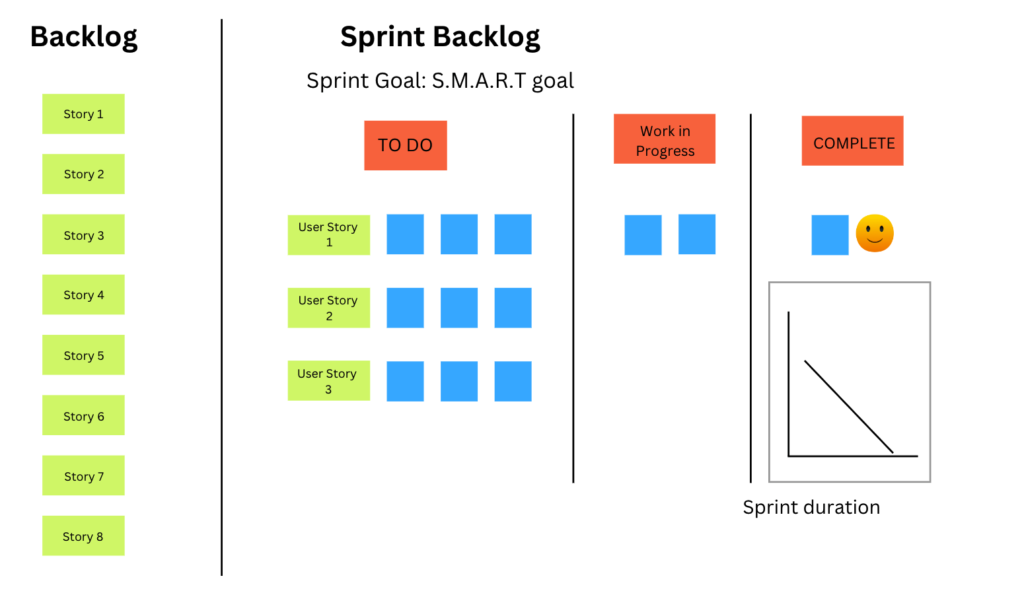
Core Concepts
- Product Lifecycle: The stages a product goes through: ideation, development, launch, growth, maturity, and decline.
- Minimum Viable Product (MVP): A product version with just enough features to attract early adopters and validate the concept.
- Agile: A project management methodology emphasizing iterative development and flexibility.
- Roadmap: A strategic plan outlining the goals, timeline, and features of a product’s development.
- Stakeholder: Anyone with an interest or influence in a product, such as customers, team members, and executives.
- User Story: A short description of a feature from the end-user’s perspective to define requirements.
- KPIs (Key Performance Indicators): Metrics used to evaluate the success or performance of a product.
- Backlog: A prioritized list of tasks, features, or user stories to be completed.
- User Persona: A fictional character representing a target user’s behaviors, goals, and needs.
- Product-Market Fit: The point where a product meets market demand effectively.
Operational and Execution Terms
- Scrum: A framework within Agile focused on incremental delivery via sprints.
- Sprints: Time-boxed periods (e.g., two weeks) to complete specific tasks in Agile.
- Wireframe: A low-fidelity visual guide representing the skeletal framework of a product.
- Usability Testing: Assessing a product by testing it with real users.
- Epics: Large user stories broken into smaller tasks or stories.
- Iteration: A cycle of development and refinement in product design or software.
- OKRs (Objectives and Key Results): A goal-setting framework for tracking outcomes.
- A/B Testing: Comparing two versions of a product to determine which performs better.
- Customer Journey: The path users follow from awareness to adoption of a product.
- Churn Rate: The percentage of customers who stop using a product over a specific period.
- NPS (Net Promoter Score): A metric for gauging customer satisfaction and loyalty.
- Retention: The ability of a product to keep users over time.
- Cross-Functional Team: A team composed of members from different departments.
- Feature Prioritization: The process of deciding which features to develop next.
- Competitive Analysis: Research on competitors’ products to identify market opportunities.
Strategic and Advanced Terms
- Lean Product Management: Building products with minimal waste by focusing on user feedback and iteration.
- Value Proposition: The unique benefit a product offers to its users.
- Customer Segmentation: Dividing users into groups based on shared characteristics.
- Revenue Model: The way a product generates income.
- API (Application Programming Interface): A tool enabling software to interact with other systems.
- SWOT Analysis: Assessment of strengths, weaknesses, opportunities, and threats.
- UX (User Experience): The overall experience users have while interacting with a product.
- UI (User Interface): The visual elements through which users interact with a product.
- Tech Debt: The cost of choosing an easy solution now over a better one later.
- Conversion Rate: The percentage of users who take a desired action (e.g., signing up).
- Adoption Rate: The rate at which users start using a new product or feature.
- GTM (Go-to-Market) Strategy: A plan to deliver a product to its target audience.
- Customer Feedback Loop: The process of gathering and implementing user input.
- Escalation: Raising an issue to higher levels of management when it requires urgent resolution.
- Retention Metrics: Quantitative measures that track customer loyalty and retention.
Other Terms
- Heatmap: A visual representation of user interaction on a webpage or product interface.
- Product Vision: A long-term goal for what a product aims to achieve.
- Innovation Pipeline: The flow of new ideas from concept to implementation.
- PMF (Problem-Market Fit): Ensuring the problem a product solves aligns with market demand.
- SaaS (Software as a Service): A software delivery model where products are hosted online.
- Product Ops: Practices and systems supporting product management teams.
- Customer Acquisition Cost (CAC): The cost to acquire a new customer.
- Freemium: A pricing model offering free and premium product tiers.
- Use Case: A specific scenario showing how a product feature is used.
- Growth Hacking: Experiment-driven techniques to grow a product’s user base.
